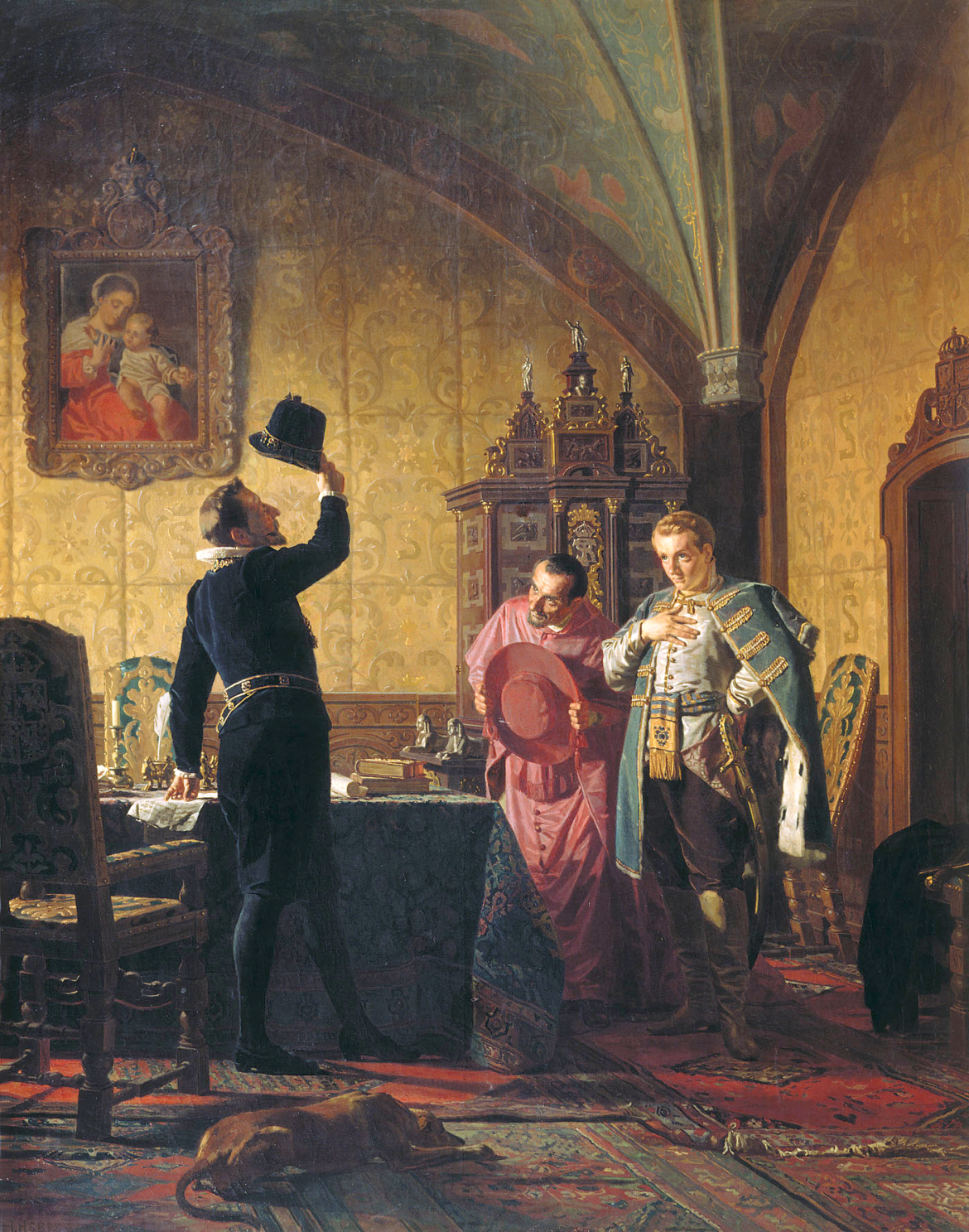During the crisis of the Russian state between 1604 and 1610, often referred to as the Great Sorrow, the Polish and Lithuanian nobility decided to seize the opportunity and put their candidate on the Moscow throne in 1605.
After the death of Tsar Ivan IV, the Terrible in 1584, a tsar boyar close to the deceased, Boris Godunov, took over power in Russia. He ruled the state on behalf of the mentally ill Tsar Fyodor I, son of Ivan the Terrible. Many historians claim that Godunov decided to assassinate another crown-able son of Ivan the Terrible – Dmitri, Fyodor’s younger brother. Dmitri’s death resulted in Godunov’s rise to the Moscow throne in 1598. However, his rule was met with widespread resistance.
Soon, in 1603, an adventurer, a Moscow monk claiming to be the miraculously rescued Tsarovich Dmitri, appeared in the Eastern Borderlands of the Polish Republic. Although no one believed him, Polish and Lithuanian magnates recognised that his presence could contribute to the seizure of power in Russia. That was even easier given the famine in the country in 1601-1603.
The identity of Dmitri, later named Samozwaniec (Imposter), has never been confirmed. He was probably Grigory ‘Grishka’ Otrjepiev. He won the support of some Polish and Lithuanian magnates, the Catholic Church, and the Polish King Sigismund III Vasa. Initiated into the plan to intervene in Russian affairs, Sandomierz voivode Jerzy Mniszech gave his daughter Maryna to Dmitri as his wife.
In 1604. Samozwaniec with his army crossed the Russian border. He was joined by peasants and some boyars. The unexpected death of Tsar Godunov in 1605 opened the gates to Moscow for the Polish-Lithuanian candidate and brought the tsarist crown. The moment of triumph was brief – in 1606 Samozwaniec was assassinated.





